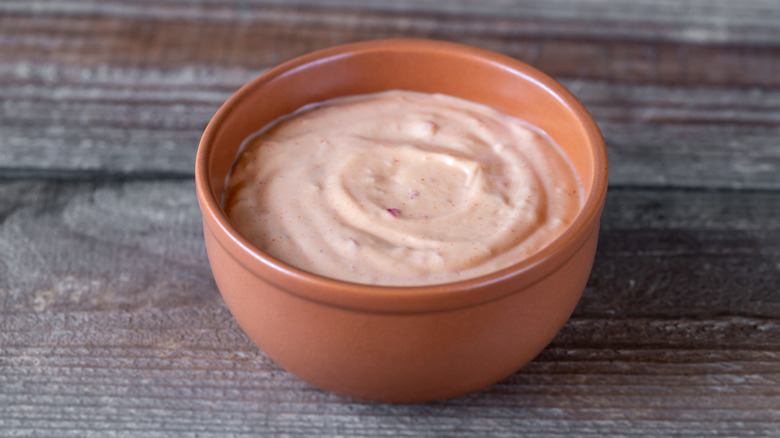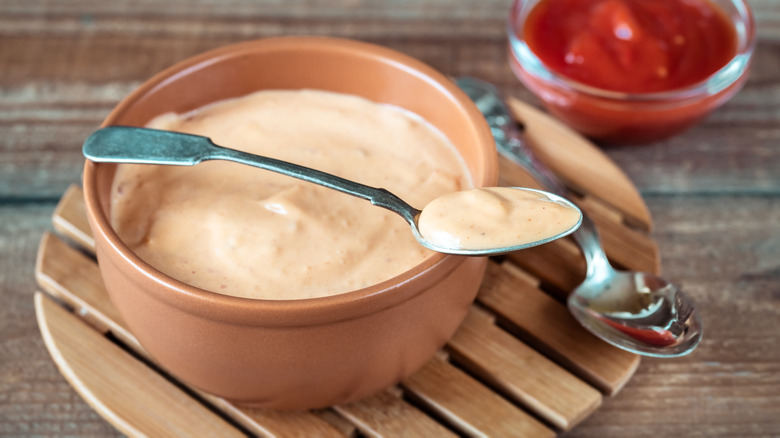Yes, There's Actually A Difference Between Russian And Thousand Island Dressing
Russian and Thousand Island dressings look alike, taste alike, and if both dressings are offered at a salad bar, it's hard for many people to differentiate between the two unless there is a label. Along with being used on salads, both dressings are a popular sandwich condiment as well. Thousand Island is used as the base for the "special sauce" on McDonald's Big Macs while Russian dressing is used on Reuben sandwiches. The two dressings are tangy and have a funky orange color, but are they the same thing? The simple answer is no. There are subtle differences in ingredients between the two.
Both dressings typically start with a mayonnaise and ketchup base, but Russian dressing often includes chili sauce and horseradish that add a little spiciness. Thousand Island is sweeter and has a creamier texture. It usually includes onions, mayonnaise, sour cream, garlic, and sweet pickles or pickle relish. Some recipes also call for hard-boiled eggs.
Russian dressing is more savory than Thousand Island, which is why it is the preferred condiment on Reubens. The horseradish gives of the right amount of pungency that plays well with the corned beef and sauerkraut, which potentially gave way to using the dressing on sandwiches in the first place. The sweetness of Thousand Island makes it a perfect pairing with ground beef, and ingredients like ketchup can be omitted for a little more punch, as with the Big Mac.
Russian and Thousand Island dressings' origins
Believe it or not, Russian dressing is not Russian in origin – it's American. In fact, both dressings originated in New England, though the history of Thousand island is a little cloudy. Russian dressing was invented in New Hampshire by a grocery store owner named James Colburn. Some say the dressing originally contained caviar, which influenced its name. Others say the name was because it was served on a certain salad inspired by Russia.
Thousand Island, meanwhile, has disputed origins. What is known is that the condiment was popularized at The Waldorf-Astoria hotel in New York. One story goes that Waldorf-Astoria's owners, George and Louise Boldt, were on a boat trip in the St. Lawrence River where many mini islands stretch from New York to Ontario, Canada. Their chef was preparing a salad for lunch and forgot the dressing, so he had to create one on the fly. The dressing was so impressive that it became a staple at the world-renowned hotel.
The second theory is that a fishing guide's wife named Sophia Lelonde created the dressing to serve to fishermen, who called it Sophia's sauce. She gave her recipe to the owners of the Herald Hotel, where one guest, actress May Irwin, named the dressing after New York's Thousand Islands. It was Irwin who supposedly passed the recipe to the Boldts for use at their hotel. Whichever version is true, the humble sauce grew in popularity and is now a household name.

